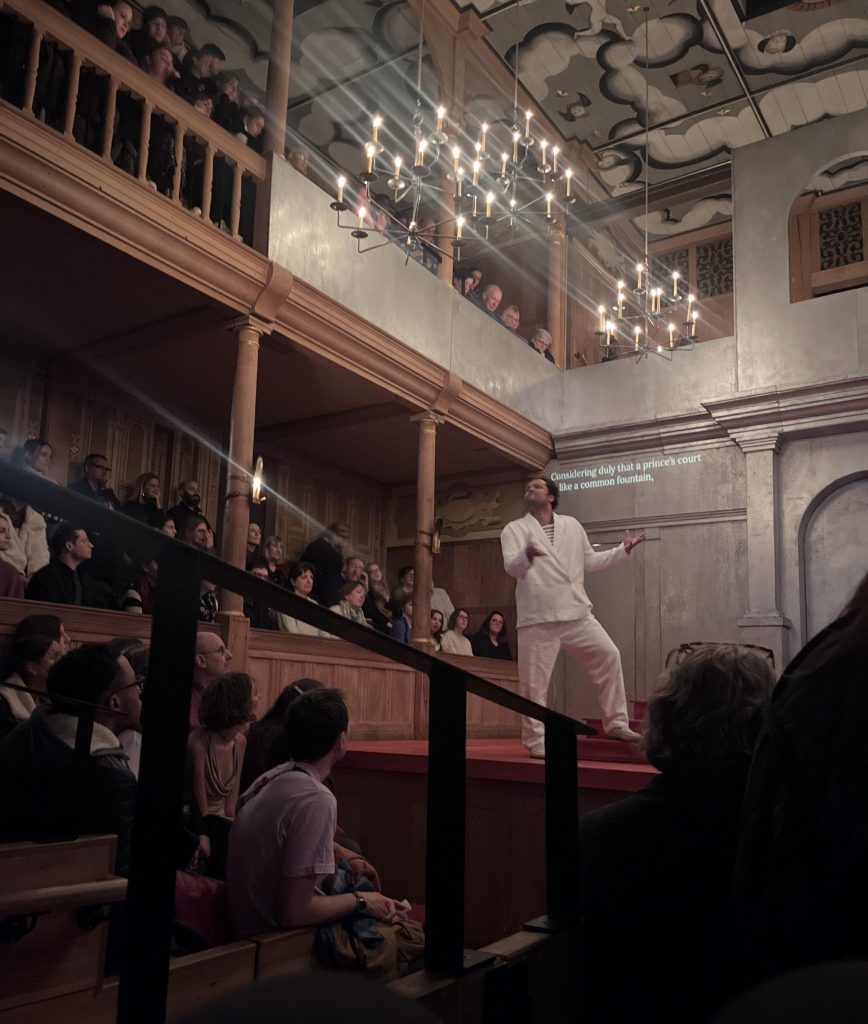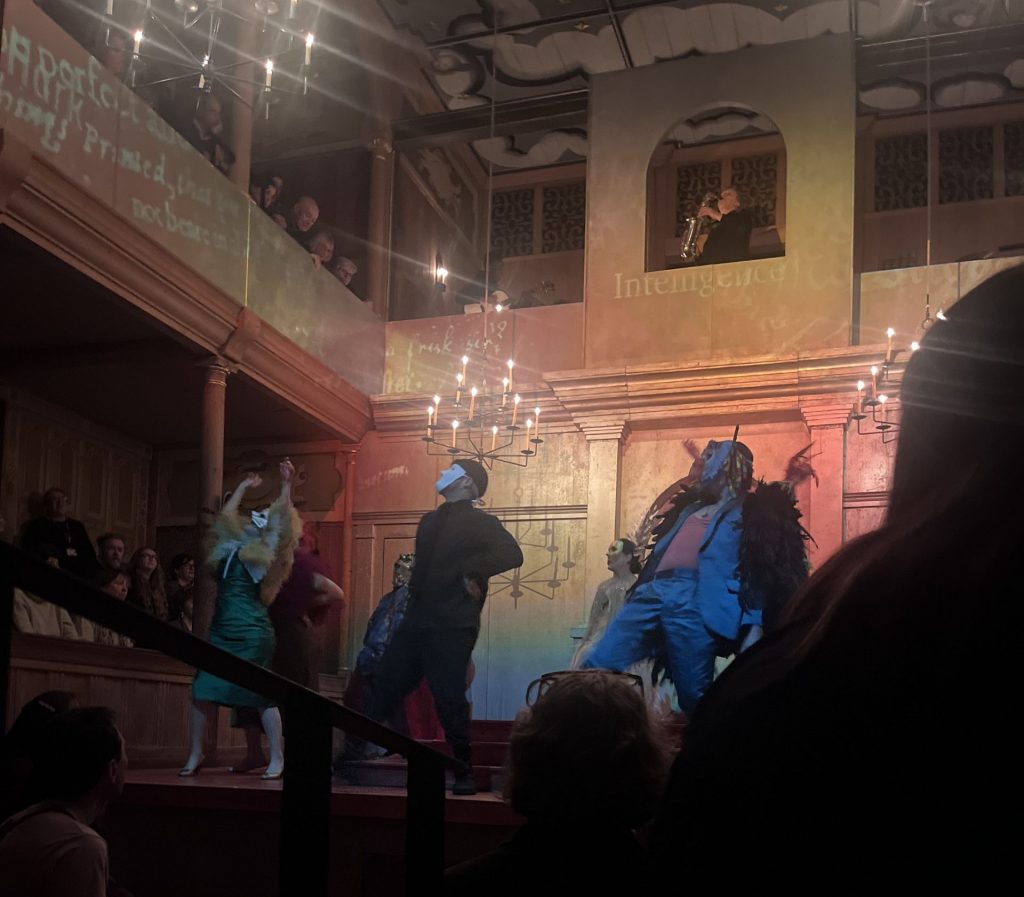Loreto College’s English Department recently took their students to see The Duchess of Malfi at Shakespeare’s Globe in Stratford-upon-Avon. A Level English Literature student Grace, was inspired to write the following review:
The Duchess of Malfi (directed by Rachel Bagshaw) returns to Shakespeare’s Globe after ten years and we were all excited at the opportunity to see this landmark production. The play is being performed in the Sam Wanamaker’s Playhouse (based on a design of Blackfriars Theatre where Webster first showed the play) under only candlelight. This adds a real sense of authenticity to the production, something we could really appreciate from our seats in the pit, meaning that we were less than a metre away from the stage and so completely immersed in the action.
The play follows the Duchess of Malfi who is recently widowed, and who is remarrying despite her two corrupt brothers – Antonio and the Cardinal – declaring that she must not. The plot then centres around the brutal, bloody conflict that ensues when her remarriage is exposed.
Despite the historically accurate setting of the Playhouse, Bagshaw plays with the period by choosing costumes drawing on influences from the 20s, 60s and 90s with the Duchess in a golden flapper-style gown while her brother Ferdinand in an Italian designer suit. This anachronism is also evident through the props with scenes modernised; both Julia and Antonio carry guns at one point in the play, as well Ferdinand’s poniard not being a real knife but rather a tattoo.
Bagshaw describes the Duchess as a ‘quiet radical’, and this is perfectly captured by Francesca Mills. Unlike other versions, Mills leans into the comedic elements of the play, especially in earlier scenes such as when she is trying to ‘woo’ Antonio (Olivier Huband) as she adjusts her dress and awkwardly poses across the stage to get his attention. Mills demonstrates her range, however, as we move through the play, giving a haunting performance before her death leaving the audience both in awe of the character’s bravery and devastated by the loss of such a noble woman.
One of the biggest changes to the play was the erasure of Delio (Antonio’s closest friend and confidant) with many of his lines instead going to Cariola (Shazia Nicholls) who gave an exceptional performance as the Duchess’ fiercely loyal lady in waiting. Instead of Delio’s final rhyming couplet to end the play, we finish with the Duchess’ daughter proclaiming that ‘These wretched eminent things leave no more dane behind ‘em that should one fall in a frost and leave his print in the snow: as soon as the sun shines, it ever melts, both form and matter,’ leaving us with a new society cleansed from the corruption of the tyrannical Malfi brothers.
The stagecraft was wonderful: whether it was the utilisation of the candles – constantly being adapted to the mood of each scene – or the projected lines across the wall of the play across the back wall of the theatre. This was incredibly helpful, especially for first-time watchers of the play or those unfamiliar with the language used. One of the best uses of the projector is when the Duchess is being tortured by madmen who had been placed around her house and across the stage the mad men’s ramblings are projected sporadically across the theatre increasing in speed until they all become white pixels melting the like ‘snow’ with its ‘prints’ being ever melted in ‘both form and matter.’
This is a fantastic reimagining of Webster’s work that really makes the misogyny of not only the Malfi society evident but also makes us reflect on the similarities to the world of the play in our own. I would wholeheartedly recommend this for students and theatre lovers alike.

